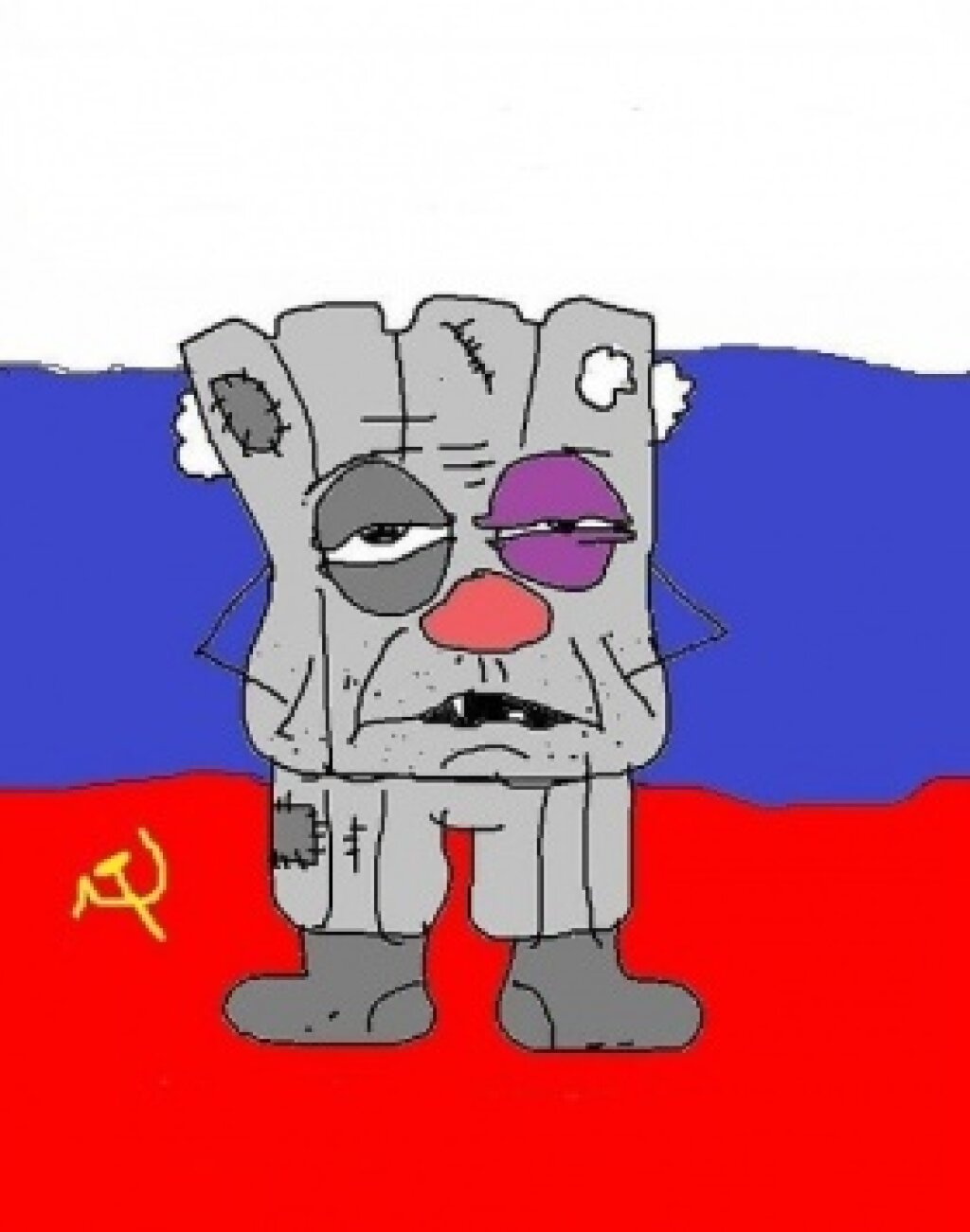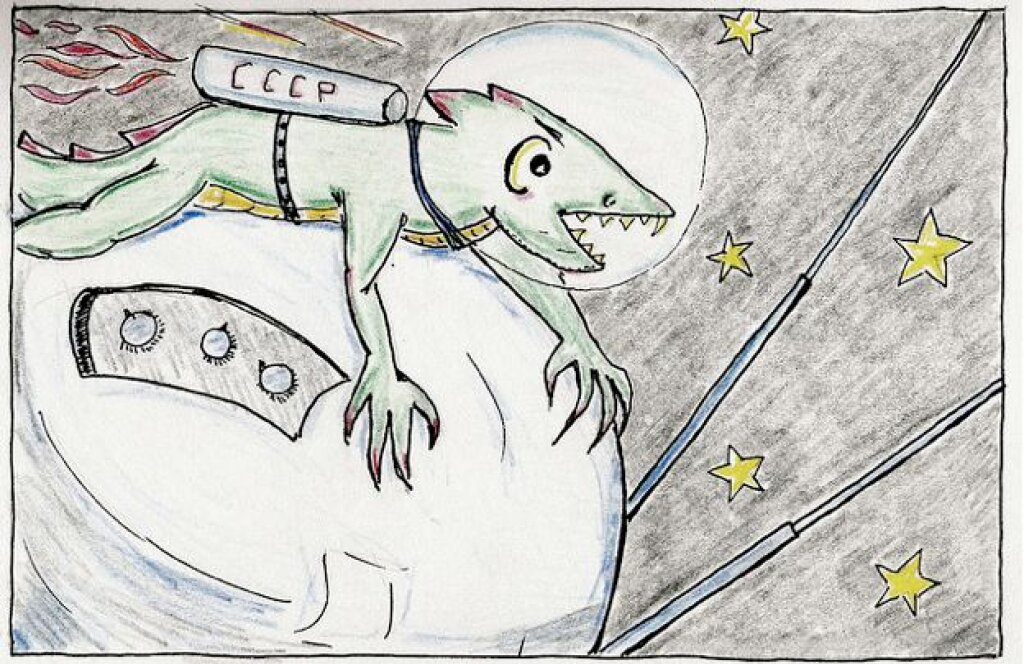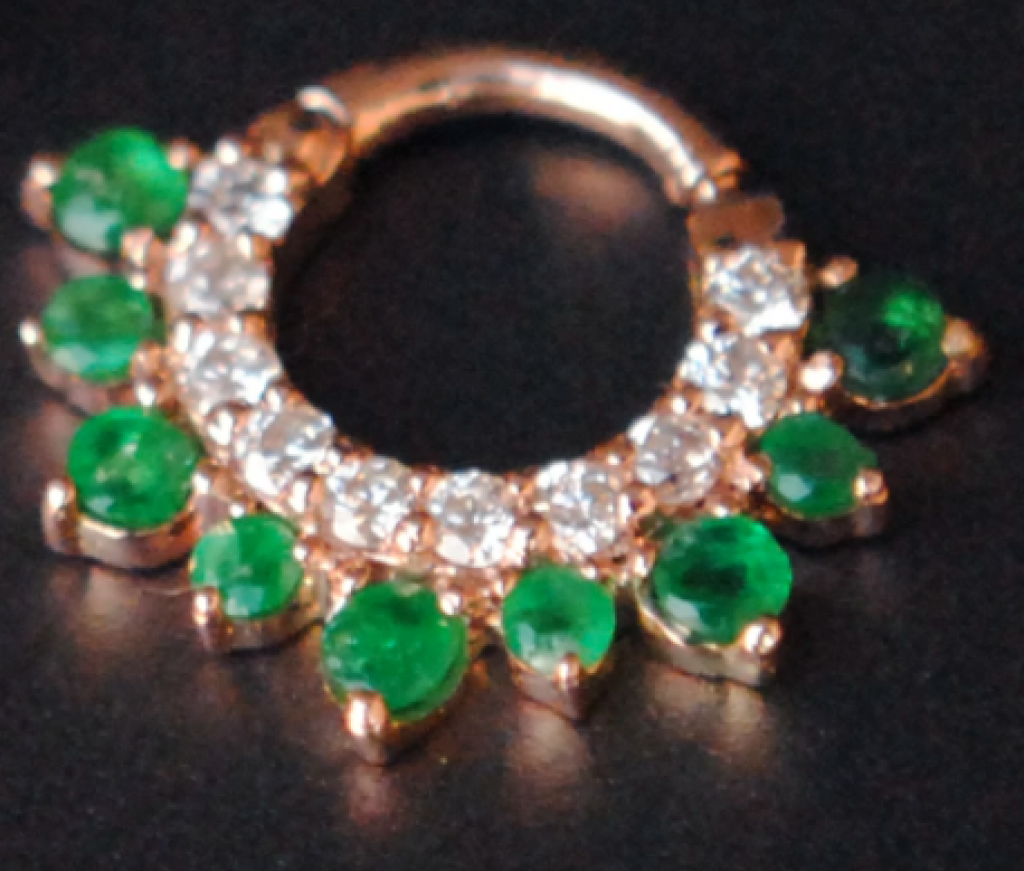This is the thirty-second entry of Russia’s Alien Nations: The Secret Identities of Post-Socialism, an ongoing feature on All the Russias, as well as the nineteenth entry of Chapter 1. It can also be found at russiasaliennations.org. You can also find all the previous entries here.
In 2011, cartoon Anton Chadsky invented a meme that would, a few short years later, become a mainstay of political discourse and satire: Vatnik.
The Russian word “vatnik” originally and primarily refers to a cotton-padded jacket that was part of the Soviet army’s winter uniform from the 1940s through the 1960s, also serving as standard-issue winter clothing for prisoners in the Gulag. In a 2104 interview with Snob,ru (https://snob.ru/selected/entry/82278), Chadsky explains how he turned the vatnik into an Internet meme:
It was in 2011, a couple of months before the mass protests against the falsified Duma elections. I decided to draw a character who would embody all the negative qualities of the typical Russian citizen (rossianina). By analogy to SpongeBob Square Pants, Rashka Square Vatnik (Рашка-Квадратный Ватник) was born.
Chadsky also cited American satirical cartoons as an influence, claiming that they can help people “set their brains right”: American Dad and Family Guy “are cartoons that poke fun at the flaws of American society. I want my readers to look at themselves from the outside, get more rational, and not fall for propaganda.” For better or worse, Vatnik takes visual inspiration from SpongeBob (he is roughly the same shape) and satirical inspiration from the work of Seth McFarlane.
Where SpongeBob is a bright and healthy yellow (well, healthy for a sponge), Vatnik is gray. Where SpongeBob smiles vacantly, Vatnik looks like a mean drunk. One of his eyes is always blackened, the other purple and closed shut. His teeth are few and far between, and his face is usually covered with a five-o-clock shadow.
As a mouthpiece for the kind of reflexive chauvinism known in Russian as “урапатриотизм” (“Hurrah Patriotism”), the Vatnik meme quickly spread throughout the Internet. Obviously, this is fundamentally different from the way in which the idea of the sovok spread in the 1980s and 1990s, before the Internet was a mass phenomenon. The sovok’s original were verbal, as part of oral folklore; subsequently, artists could create caricatures of the sovok, but they were always multiple and secondary: as the illustrations to this chapter’s blog posts show, there is no single representation of the sovok.
The sovok started as, and remained, a character type; Vatnik was a character intended to suggest a type. When aggressive patriotic sentiment came to the forefront during the war in Ukraine, Vatnik was ready. And this is where Vatnik’s trajectory differs from that of the sovok. Where the sovok was a concept known primarily by people who could, at least theoretically, fall within its target group, Vatnik took a different path.
Vatnik was now both a specific character (as seen in the Internet meme) and a general category, a distinction I am trying to highlight here by capitalizing the word as a proper name for the character and using the definite article (with no capitalization) when referring to the type. Within Russia and the Russian-speaking community, vatnik was less an ethnic slur than a political label. Putin’s critics reserved the label “vatnik” (and its more generallized corollary, “vata’ (cotton)” for a part of their own society that they found loathsome. Internally, “vatnik” was essentially politicized, pro-Putin bydlo.
In Ukraine, “vatnik” as a designation for the Russian enemy inevitably became an ethnonym. Slurs are casually tossed about on all sides of the conflict: Russians refer to Ukrainians as “ukropy” (“dills”), while Ukrainians, who have long complained of “moskali,” now also call Russians “kolorady.” With the possible exception of “kolorady” (based on the apparent resemblance of the St. George’s ribbon, a Russian military symbol that has recently been adopted for patriotic purposes) to the Colorado beetle, these terms have no independent negative meanings. Ukrainians are called “dills” because the Russian word “ukrop” shares its first three letters with “Ukraine,” and “moskali” simply comes from “Moskva” (Moscow).
As a Ukrainian ethnopolitical slur, “valtnik” has little to recommend itself; it is just one item in a sadly growing vocabulary for denigrating a nation’s external enemy. Within Russia, the vatnik follows the path of the sovok and the bydlo towards alienating a subsection of one’s own, larger group. No doubt the vatnik is a compendium of national and ethnic stereotypical traits easily identifiable with Russians: the rowdy, aggressively patriotic vodka-swilling drunk is not exactly an original idea. The critique, however, is less ethnic or national than it is ideological: the Vatnik is an object of scorn not because of his ancestry, but because of his behavior and his worldview. Or rather, the only ancestry that is important for understanding the vatnik is figurative: he is a descendant of sovok.,
Vatnik’s own creator, Anton Chadsky, makes the link clear:
Vatnik’s success comes from the fact that it has filled an available niche, just like the term “sovok” did in its time. Some people made fun of Russian nationalists, others of communists, still others of pagans, but there was no single, collective image. Vatnik combined all of that into himself, becoming a universal symbol.
In another interview, he extends the comparison :
In my opinion, Vatnik is the anthropological continuation of the activity and way of thinking of the sovok. There’s no Soviet Union, so there are no sovki. The people who are nostalgic for the USSR today I would also call vatniks. Vatnik is the grandson and son of the sovok, he thinks in the same categories, but under contemporary Russian conditions and realities. But again, that’s if you think of the word “sovok” negatively. But Genis himself doesn’t put negative connotations into the word; his definition has nostalgic notes to it. I would consider the image of the sovok as more parodic and more caricatured negative, just as I see in the image of the vatnik a person living according to the stereotypes delivered to him by the state on television screens. (“Vnuk sovka”)
It makes sense that Chadsky sees the sovok in such a strongly negative light, since it is negativity that both characterizes and drives his idea of the vatnik. Under Chadsky’s pen, Vatnik is difficult to love: ugly, bruised, and aggressive, his features are usually contorted to express the feeling that his creator identifies as central to the vatnik’s existence: hatred.
Next: The Vatnik Ate My Baby!



